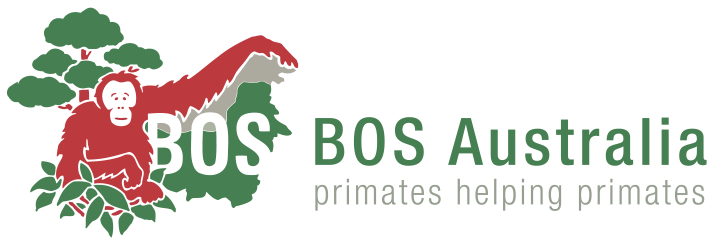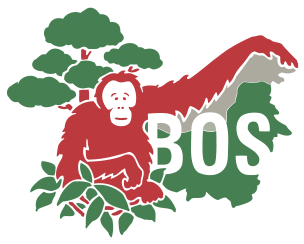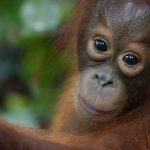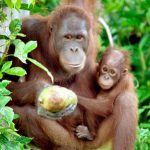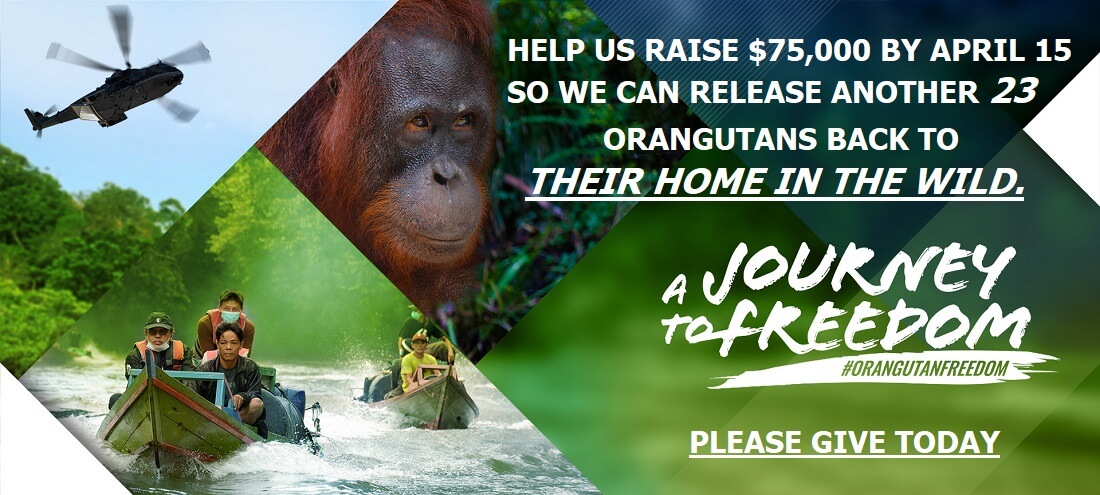Agroforestry project restores wildlife habitat
Nourishing the Planet: Matt Styslinger: 7 July 2011
Since 2002, on a 2,000 hectare plot of deforested land in the Indonesian state of East Kalimantan on the island of Borneo, an organization called Borneo Orangutan Survival (BOS) has been regenerating forest to create habitat for orangutans. By combining agriculture and forestry, the Samboja Lestari project has planted more than a million trees—including 1,000 different species. The reforestation efforts have not only established a safe haven for orangutans, it has improved food security and incomes of the local community, stabilized the local micro-climate, increased the availability of water, and begun to established a sustainable agroforestry system managed by local people.
Borneo is the third largest island in the world and historically has been covered with rainforest. Borneo’s forest is around 130 million years old, making it the world’s oldest rainforest. But the island has lost an estimated 50 percent of its forest cover since the 1970s due to logging, slash and burn agriculture, and the establishment of large-scale oil palm plantations to produce biofuels. The rapid loss of forest has produced massive amounts of CO2, making Indonesia the third largest producer of greenhouse gases after the U.S. and China. Deforestation jeopardizes the future of many rare species—including clouded leopards, Sumatran rhinos, and orangutans. It has also impoverished rural communities who have lost important resources, such as clean water, fish, fertile soil, and forest-grown food and medicines.
Biologist, and founder of BOS, Willie Smits has dedicated his career to saving the wild orangutan, which live exclusively on the islands of Sumatra and Borneo. BOS hosts over 1,000 orphaned orangutans. “This is proof of our failure to save them in the wild,” says Smits in a TED talk about Samboja Lestari. “Deforestation, especially for oil palm to provide biofuel for the western countries, is what’s causing these problems… [These are] peat swamp forests, on 20 meters of peat, the largest accumulation of organic material in the world. When you open this for growing oil palm, you’re creating CO2 volcanoes,” he says.
Smits believes that the only way to help the orangutans is to integrate local people in the restoration of their habitat. “We have to make sure that local people are the ones that benefit,” he says. “We set up the infrastructure and management and monitoring [of the project]. But we made sure that in every step of the way the local people were going to be fully involved so that no outside forces would be able to interfere.”
When the project began in 2002, says Smits, the area had experienced a near total extinction of plant and animal life. It was covered with alang-alang grass, which is prone to fires. The area was experiencing increased flooding because of the loss of foliage and topsoil, as well as increased droughts due to the loss of cloud-producing forest. About 50 percent of the people were jobless, the crime rate was high, and there was zero agricultural productivity, according to Smits.
Smits devised a recipe for reforestation that incorporates agriculture at each stage, and ends with a functioning sustainable agrogorestry system. First, short-lived, acacia trees (Acacia mangium) are planted to improve the quality of the soil and shade out the grasses. Acacias can grow on marginal land and are leguminous trees that fix nitrogen to the soil, improving fertility. The pioneer tree species also helps to put more water vapor into the air and blocks direct sunlight, lowering temperatures on the ground and creating local climate conditions that will be more conducive to forest growth. After grasses are reduced, bamboo is planted along water ways, which filters the water and can be harvested. Underneath the acacias, diverse types of slower-growing, indigenous rainforest trees are planted. Forest fungi and bacteria are reintroduced to insure that nutrients are recycled from falling leaves and returned to the soil.
Crops—such as pineapples, beans, and ginger—are planted between the trees. The farming activities keep the land around slow-growing hardwood trees free from competitor species, and the trees benefit from nutrients added to crops. The crops provide income and healthy food for both orangutans and the community.
Fires are rampant in the region around Samboja Lestari. To protect the reforested area, a 100 meter wide buffer of fire resistant sugar palms was planted. The sugar palms provide over 60 useful products, including a sugar water that can be turned into biofuel. “Sugar palms produce nearly three times more energy per year than oil palms because they can be tapped on a daily basis,” says Smits. Sugar palm trees are also incorporated throughout the reforestation area to provide long-term income opportunities.
As the forest grows thicker and taller, agriculture activities change with it. “In the second phase, there will be bananas and papayas,” explains Smits. “Later on there will be chocolate and chilies. Then slowly the trees start taking over, bringing in produce from the fruits, from the timber, [and] from the fuel wood. And finally the sugar palm forest takes over and provides people with permanent income. So, crops are being cultivated while the forest trees are growing in between.”
With the return of the forest, wildlife has begun to reemerge, including 137 bird species (up from 5) and 9 species of primates. According to Smits, 3,000 people are getting an income from the reforestation activities. He also credits the project with reducing the local temperature by 3 to 5 degrees Celsius, raising humidity by 10 percent and cloud cover by 11.5 percent, and increasing rainfall by 25 percent.
Smits hopes that the project will serve as a blueprint for other reforestation projects and closely monitors each stage of forest development, including measuring ground carbon and the development of trees through satellite imagery. Samboja Lestari has hosted hundreds of research studies on biodiversity, carbon, climate, ecosystems services, and cost-benefits in an effort to establish evidence of success and lessons for improvement for future reforestation projects.
